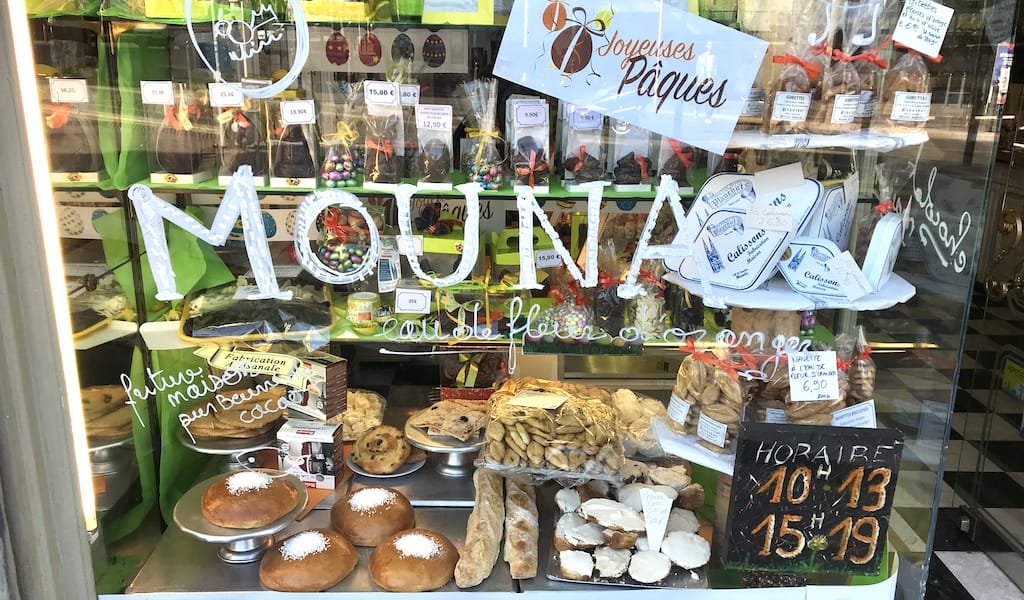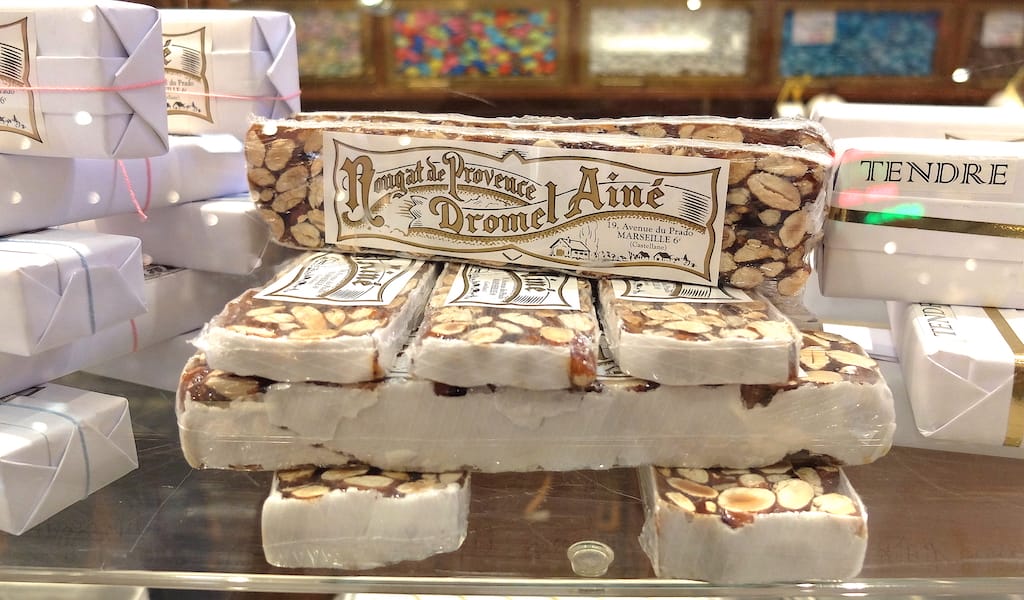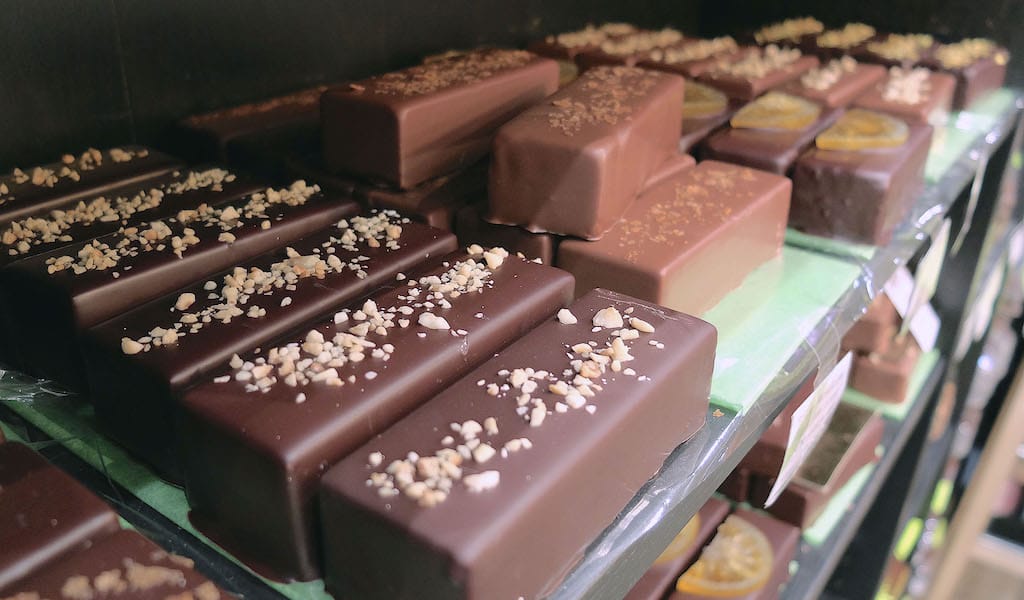Though half of France’s population is officially Catholic, only 5 percent of the country regularly attends mass. Yet, les français still remain faithful to their Christian holidays. After Christmas, Easter is the second-most popular fête – perhaps because it falls on a Sunday, when lunch en famille is a French tradition that is as revered as a religion.
Like many nations, chocolate is France’s essential Easter ingredient. Not surprisingly, the French exception – the country’s belief that they are unique – extends to the shape of their holiday confections. Here, a cloche (bell), not a rabbit, delivers Easter’s chocolate-y treats. How did an inanimate object become the bearer of sweets? As the story goes, when church bells went silent the three days before Easter to mourn Christ, they allegedly flew to Rome to be blessed by the pope. When they returned to their belfries on Pâques, they showered kids with chocolates to ring in the festivities.
Nowadays, globalization has influenced even Easter baskets – French enfants gobble eggs and bunnies too. Patisseries melt chocolate into magnificent cakes, which also come bursting with springtime’s signature fruit: strawberries. These traditional Easter treats are standard fare across France. In Marseille, however, you can find two baked goods that mirror the port city’s migration history: mouna, a brioche-like bread with Sephardic Jewish origins, and the colomba di pasqua, a panettone-like bread from Italy.
Though the coronavirus has shut down a good chunk of Marseille’s food-related businesses, some bakers and chocolate makers have donned their aprons this week. Partly to take advantage of the holiday rush to make up for lost revenue – Easter accounts for up to 30 percent of annual business for artisan chocolatiers. Plus, unlike sporting events, chocolate bells can’t be delayed until summer, especially since many southern French chocolatiers close shop when the temperature rises.
There’s also a desire to uphold traditions when so much has been upended in these difficult times. Here’s our handy guide to help you ring in Easter while supporting local businesses.
Patisserie Plauchut
In the shadow of the gothic Église Saint-Vincent-de-Paul, this venerable patisserie has been satisfying Marseille sweet tooths since 1820. Robert Giordana, the fourth generation in a family of Neapolitan immigrants to run the bakery, began working with his parents at age 15 and has been at the helm since 1989. Many flock to Patisserie Plauchut for its traditional baked goods, cakes and chocolates that are made in the bakery behind the Belle Époque-style salon du thé.
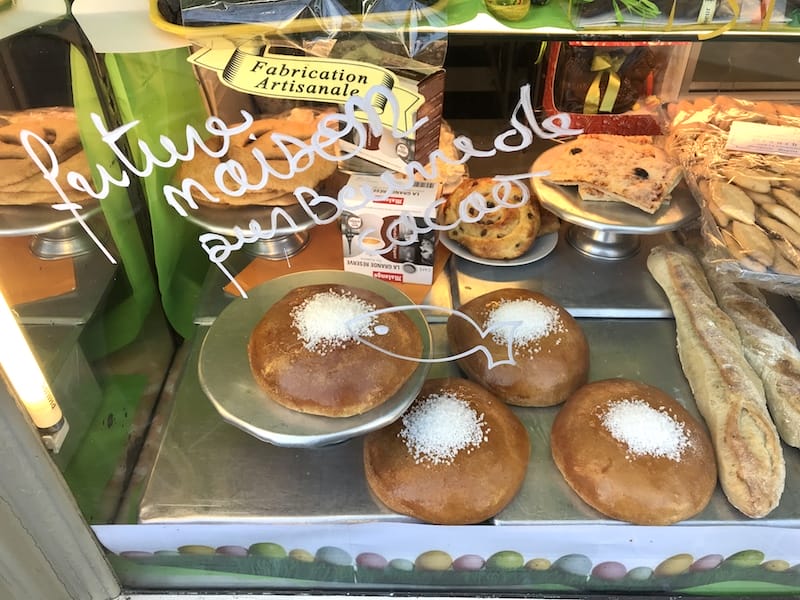
Their Easter specialty is an edible lesson in Marseille’s multicultural makeup. Mouna is an Algerian Jewish sweetbread that the pieds-noirs (European descendants born in colonial Maghreb who returned to Europe post-independence) brought across the Mediterranean in the 1960s. Named for emunah (Hebrew for faith) and imoun (“happy” in Arabic), this eggy cousin of challah and brioche is eaten on Mimouna, the post-Passover carb-fest celebrated by Sephardic Jews from North Africa.
Now the mouna is an Easter custom in southern France. Pâtisserie Plauchut swaps the classic orange peel with Provençal fleur d’oranger (orange-flower water) in their sugar-studded version. You can also find giant almond brittle eggs and every shape of chocolate at the counter. Order from Sylvie, Robert’s pert wife, who humbly explains in her Marseille twang, “my husband is the boss.” His response is as sweet as their confections: “I couldn’t do it without her.” Call 04 91 48 06 67 to reserve a mouna in advance.
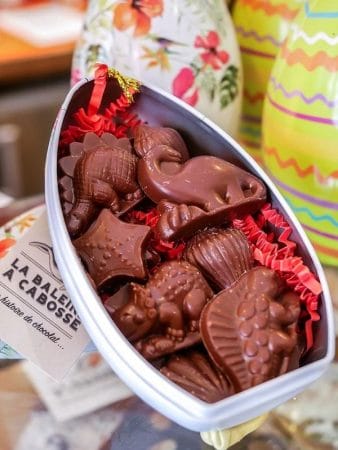 La Baleine à Cabosse
La Baleine à Cabosse
Claire and Aurélien’s cocoa-y love story began in Colombia. The couple fell hard for cacao during a trip to the country, where they learned as much as they could about every step of chocolate making. Upon returning to Marseille, they opened their bean-to-bar chocolatier in 2017, blending the French words for cocoa pod (cabosse) and humpback whale (baleine à bosse) for their whimsical name.
For Easter, the duo is crafting dark, white and milk chocolate eggs, dinosaurs, rabbits and even fish. When I saw the latter during my first Easter in Marseille, I figured it had something to do with the city’s fishing industry and its perch on the Mediterranean. But you can actually catch the poissons all over France. Like many things in this increasingly secular nation, they have religious roots – in this case, it’s a story in the Bible. Best to order online. Free local delivery is also available.
Oh Faon
It’s hard to believe there isn’t butter or cream or eggs in these vegan treats. Hence why Jérôme and Kevin named their beloved after an expression of surprise in Marseille slang. “Inspired by Marseille artisans both past and present,” the friendly couple opened this pâtisserie végétale as a second act – though Jérôme’s exquisite creations look like the work of a seasoned chef.
To double your pleasure for Pâques, Oh Faon is serving two cakes that are both vegan and gluten-free. Instead of a chocolate bell, dig into the Ding Ding Dong: chocolate ganache, mousse, and caramel loaded into a brownie and chestnut flour crust. For a tart that makes the most of the season, try the souvenirs de cueillette (“harvest memories”), brimming with freshly plucked strawberries, fire-roasted strawberry jam, toasted bread cream, and tarragon pea granita. For the kids, chocolate bears from local Françoise Chocolaterie will also be on sale. Order online for pickup at Oh Faon.

Bricoleurs de Douceurs
It all began with a lemon tart. Clément Higgins made one to wow his boss at the pizza place where he worked. Thanks to its success, the self-taught pastry chef had the guts to open his own shop despite no formal training. The young “handyman of sweetness” (bricoleur de douceur) creatively cobbles flavors and textures together in his toothsome desserts. His playfulness extends to their names. Think Choc Norris and the cheeky NTR – whose letters stand for “f-ck your diet” in French.
After his off-the-beaten path place by the sea won many accolades, Clément opened a second locale with his partner in love and life, Aurélie – the behind-the-scenes boss at their popular pâtisseries. Though they have cut staff and predict to sell at least 50 percent less than last year’s bounty, the Easter menu at Bricoleurs de Douceurs is anything but light.
Clément adds black sesame praline to his tarte aux fraises to “depart from the traditional vanilla, lime, and verbena pairings.” The Marseille-Brest is less heavy and saccharine than the classic hazelnut-driven Paris-Brest. If you insist on eggs, try the vanilla flan or the chocolate eggs – in either smooth (filled with peanut praline) or crunchy (with puffed rice, caramelized almonds, and hazelnuts.) Only available by online order.
 November 30, 2021 Patisserie Avyel
November 30, 2021 Patisserie Avyel
Around this time of year, the smell of dough frying fills the air on a side street off […] Posted in Marseille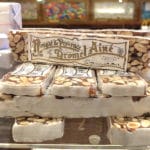 December 15, 2020 Lucky 13
December 15, 2020 Lucky 13
Holiday traditions tend to be tied to numbers. In southern Italy there is the Feast of […] Posted in Marseille December 4, 2020 La Chocolatière de Marseille
December 4, 2020 La Chocolatière de Marseille
When we first moved to Marseille, a jewel box of a shop caught our eye while wandering […] Posted in Marseille
Published on April 09, 2020
Related stories
November 30, 2021
MarseilleAround this time of year, the smell of dough frying fills the air on a side street off Marseille’s busy Rue de Rome. The source of the enticing scent is Patisserie Avyel, a small kosher bakery and salon de thé in the midst of preparing for Hanukkah, which in 2021 began on the evening of…
December 15, 2020
MarseilleHoliday traditions tend to be tied to numbers. In southern Italy there is the Feast of Seven Fishes on Christmas Eve, while in Poland, the night before Christmas is celebrated with borscht, herring and poppy seed cake at the 12-course Wigilia. Here in Provence, our lucky number is 13, with the Treize Desserts de Noël.…
December 4, 2020
MarseilleWhen we first moved to Marseille, a jewel box of a shop caught our eye while wandering around the Vieux-Port. Its window display was stacked with chocolates: smooth rectangular bars, green and brown olivettes (chocolate-covered almonds) and slabs studded with every kind of nut. When a customer opened the door to leave, the strong scent…







































